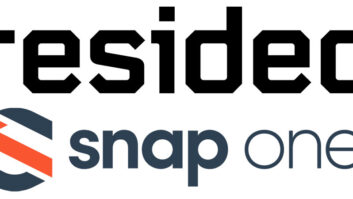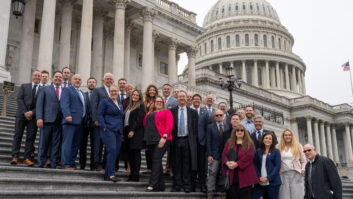Most business owners will attest that one of their biggest challenges is hiring and retaining staff. The custom installation industry is no exception, with firms struggling to recruit the skilled talent required to execute projects and contribute to future growth.

That struggle isn’t because CI doesn’t offer fulfilling career paths — especially for those entering the workforce. “It is a high-growth industry with very fast advancement,” says Paul Starkey, co-founder of PrepTECH, headquartered in Holland, Mich., which offers subscription-based recruitment services to integration firms and apprenticeship programs for aspiring CI professionals. “By our estimation, most entry-level techs can be lead techs in three to five years, increasing their starting pay by 30 to 50 percent.” He adds that many technicians move into managerial, programming, and sales roles. While some may even launch their own CI firms, others become solid succession candidates for business owners who are transitioning into retirement or other ventures.
Related: Paul Starkey vs. Staffing
Tommy Tabor, director of workforce development at CEDIA, the industry association for smart home professionals headquartered in Fishers, Ind., encourages custom installation firms to place as much priority on talent engagement as they do on engaging their customers. He suggests that employers adopt a number of practices, including:
- Connecting with government agencies that focus on workforce and economic development, as well as education
- Partnering with community organizations and staffing agencies — especially those who work with job candidates who have been laid off recently (or who will be laid off in the near future)
- Forming relationships with career counselors and academic advisors at vocational schools and institutions that offer technical programs
- Reaching out to public workforce offices and veterans’ affairs organizations
- Connecting with CEDIA to take advantage of the industry-specific resources it offers
Tabor also urges CI firms to partner with manufacturers, distributors, and even other integration companies to organize career days and job shadowing events. He also notes that those businesses that participate in corporate social responsibility (CSR) activities not only help the communities they’re located in, but they also raise their profile within the industry.
“Employers must be ready, willing, and able to be aggressive,” Tabor says. “The old days of posting a job description and waiting for candidate applications [and/or] resumes to roll in are coming to an end.”
Adopt a People-First Approach
While many business owners claim that it’s their employees who make their organizations successful, employers must commit to supporting their people to retain them — and attract new talent. For Tabor, this requires CI firms to adopt a people-first approach that consists of ensuring that employees’ health, social, and financial well-being are top priority. He acknowledges that this requires companies to:
- Offer decent compensation and benefits
- Engage with employees to determine their level of job satisfaction
- Provide a career path
- Develop a culture that emphasizes transparency
Tabor also encourages CI firms to provide ongoing professional development opportunities to their employees, including new-hire training and cross-training for different roles. Employers may also offer skills training that results in industry-recognized credentials, or post-secondary tuition assistance to those seeking to earn a degree.
Related: CEDIA seeks the next generation of smart home talent
“These should strategically expand individual employee capabilities, marketability, and overall employability, which will in turn enhance overall company competitiveness and profitability,” Tabor argues. Coupled with this, CI firms should be encouraging their employees to participate in networking opportunities that allow them to connect with their peers (both inside and outside of the industry), serve on community boards, and volunteer for their favorite organizations.
Forecast Your Labor Needs
Ron Callis is CEO of One Firefly LLC, a digital marketing agency that serves residential and commercial custom integration companies. At CEDIA Expo 2023, One Firefly announced the launch of Amplify People, a subscription-based recruiting service for integration firms.
Among the methodologies that Callis and his team apply at One Firefly is labor forecasting. When companies do this, he argues, they run less risk of having to hire out of desperation when sales increase.
“An integrator has an equation of a project manager [being] responsible for so many jobs with so many technicians,” Callis illustrates. “And if they hit their sales forecast, they can already be looking into the future and forecast their need for labor, versus it being a fire drill when they’ve run lean, and all of a sudden it’s an emergency.” Reactive decision-making, he says, doesn’t result in the best hires. “You want to be making those decisions when you’re calm, cool, and collected, and that happens by getting in front of the problem by modeling out your labor.”
Launch an Employee Referral Program
Karen Young, SPHR, SHRM-SCP, is president of HR Resolutions, a human resources services firm based in Harrisburg, Pa. She is also author of Sought After: How to Be Heard, Be Trusted, and Be Recognized for Your Expertise and Honest and Real: An Essential Guidebook to Drama-Free Human Resources.
Young recounts that her company recently launched employee referral programs in several of its client organizations. Under this model, employees who refer a job candidate are awarded a bonus if that individual is hired and then remains with the organization for a week, then a month, and then three months. “The intent there is the person who referred them wants the full amount [of the bonus], so they’re going to work with the individual,” she explains. The veteran employee is essentially the new hire’s “referral buddy” who can help them navigate through the transition into the role.
Define Career Paths
Like Tabor, Young argues that when employers establish clear career paths, they are more likely to succeed at recruitment and retention. When engaging new hires, she encourages employers to lay out several different possibilities. For example, if the candidate is applying for a job as an entry-level tech, the hiring manager may explain that it’s possible to work toward developing the skills to become a project manager or a systems designer.
Related: Hiring the Bravas Way
“People want to move around and through organizations, so we want to demonstrate that we have multiple paths for them to follow, based upon what their interests are and what they want to do,” Young says. “Start talking about that when you’re doing your recruiting and continue to talk about that through the orientation period.”
Talk About the Bad Stuff
One error employers often commit is overselling a position, or omitting the less glamorous aspects of a particular job. Young argues that it’s also necessary to discuss the unattractive parts of the job in question.
“I believe that it is imperative that we talk about the bad stuff in the job,” Young says. “Every job has it — every single one.”
Young uses one of her clients as an example: When hiring shift workers to work in a manufacturing plant, she and the company’s hiring managers gave a tour and let candidates know that it’s normal that the facility smells odd. (Not bad, she emphasizes, just that it smells.) Also, employees would be standing on a cement floor for the duration of their shifts. “We wanted people to see that this is what it’s like on the floor because this is [going to be] eight hours of your day,” she says.
Talking about the bad stuff is important, Young says, because it gives candidates a realistic depiction of what the job involves. She recounts that when her firm conducts exit interviews involving new employees who quit during their introductory periods, nine times out of 10 it’s because the actual job didn’t match the description they were given.
Be Transparent About Expectations
One frustration many employees have is that they don’t know when their employer is happy with their performance and when they’re not. Callis notes that this is because performance expectations aren’t clear. “They have no idea if they’ll get a bonus — and if they get one, why they would get that bonus,” he says.
This can have a negative impact on retention, which is why Callis urges CI firms to establish clear expectations for each role. He says that he lays all of this out during the recruiting process, and then again when the candidate is hired. “If you are underperforming, you can’t tell me you didn’t know how you were going to be measured — it was absolutely clear,” he says.
Connect With Employees Regularly
While many companies have a formal performance review process in place, Young urges employers to avoid making this the only time they connect with employees. Instead, she encourages business owners to sit down with their employees on a regular basis to revisit career path discussions and address any issues — including criticisms that employees may have about the company.
Related: Building Your Employee On-Ramp
“That’s going to help with retention,” Young says. “Our employees are hungry to be heard. They want to complain to us before they go and complain to a new employer.”
This means that employers must be ready to hear negative feedback. Young acknowledges that it isn’t easy — she admits she doesn’t like it when an employee criticizes her management techniques, or the direction her business is pursuing — but it’s a necessary component of a healthy workplace. “I take it as a learning [opportunity] and consider what they have to say because they’re the ones doing the work,” she says. When appropriate, this could lead to some positive change. “It takes vulnerability to be able to do that — and knowing that I’m still the owner [and] I still have the ultimate say — but it’s okay to get someone else’s opinion.”
Build a Strong Culture
For Callis, the companies that are most successful at recruitment and retention are those that have a strong company culture. This means that the organization has a clear definition of what it stands for and what makes it different. In other words, what is the company’s mission? What are its values?
When employers are clear about this, Callis argues, they are more likely to find and retain the right people. “If we understand the personality of this person, the skills and capabilities of this person, and his or her company culture preferences, then we have the opportunity to make good partnerships between those candidates and companies.”







